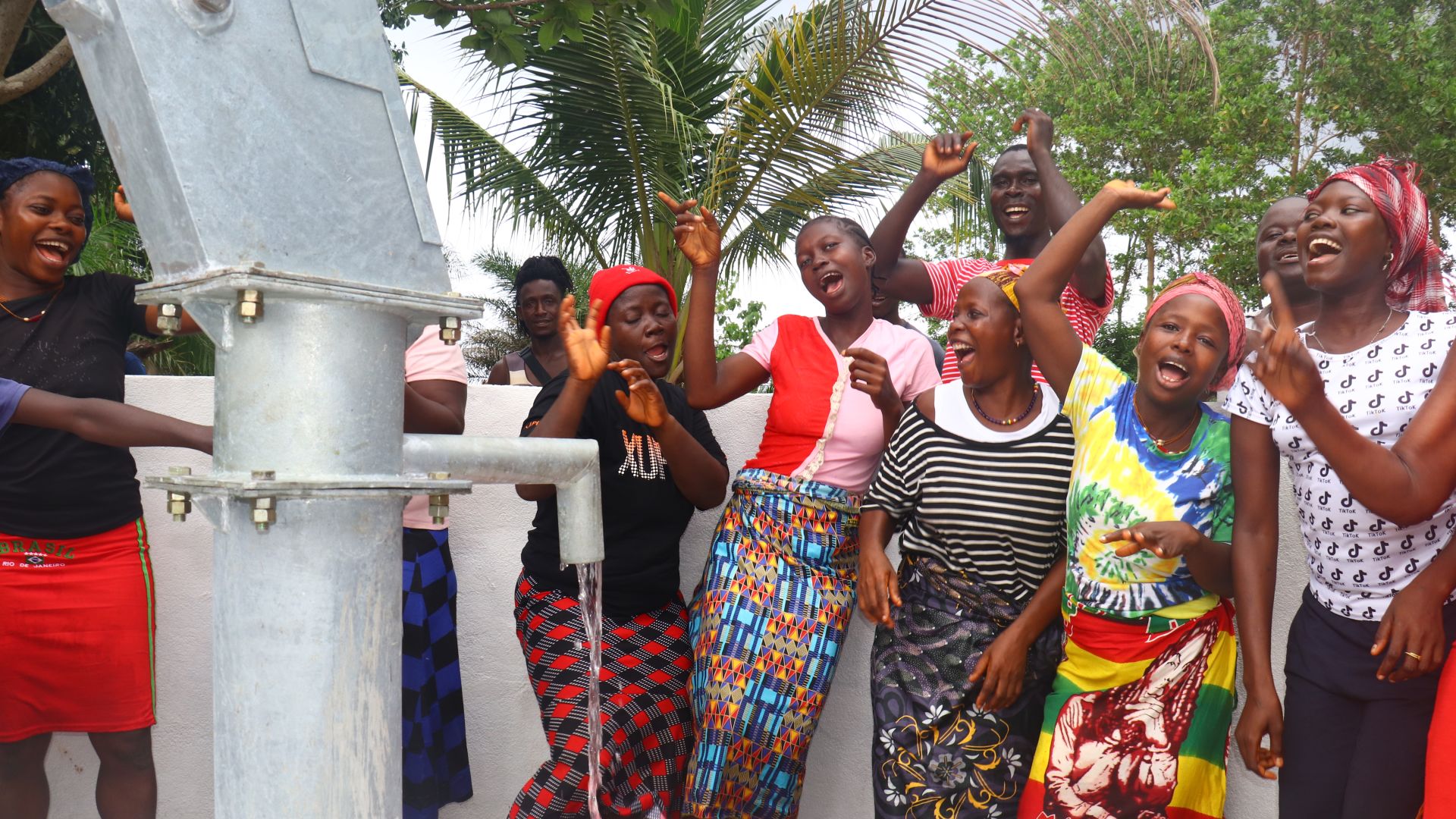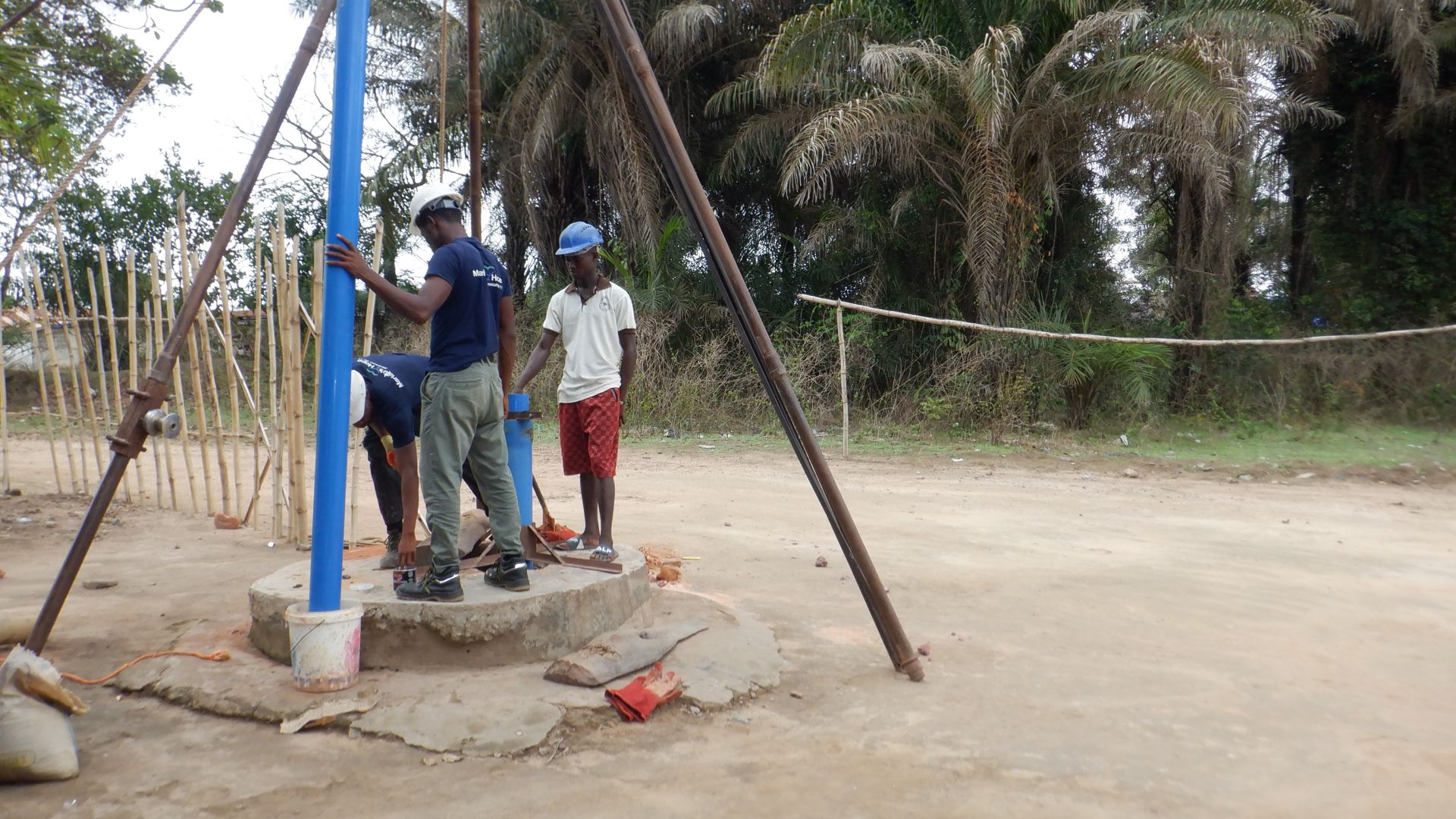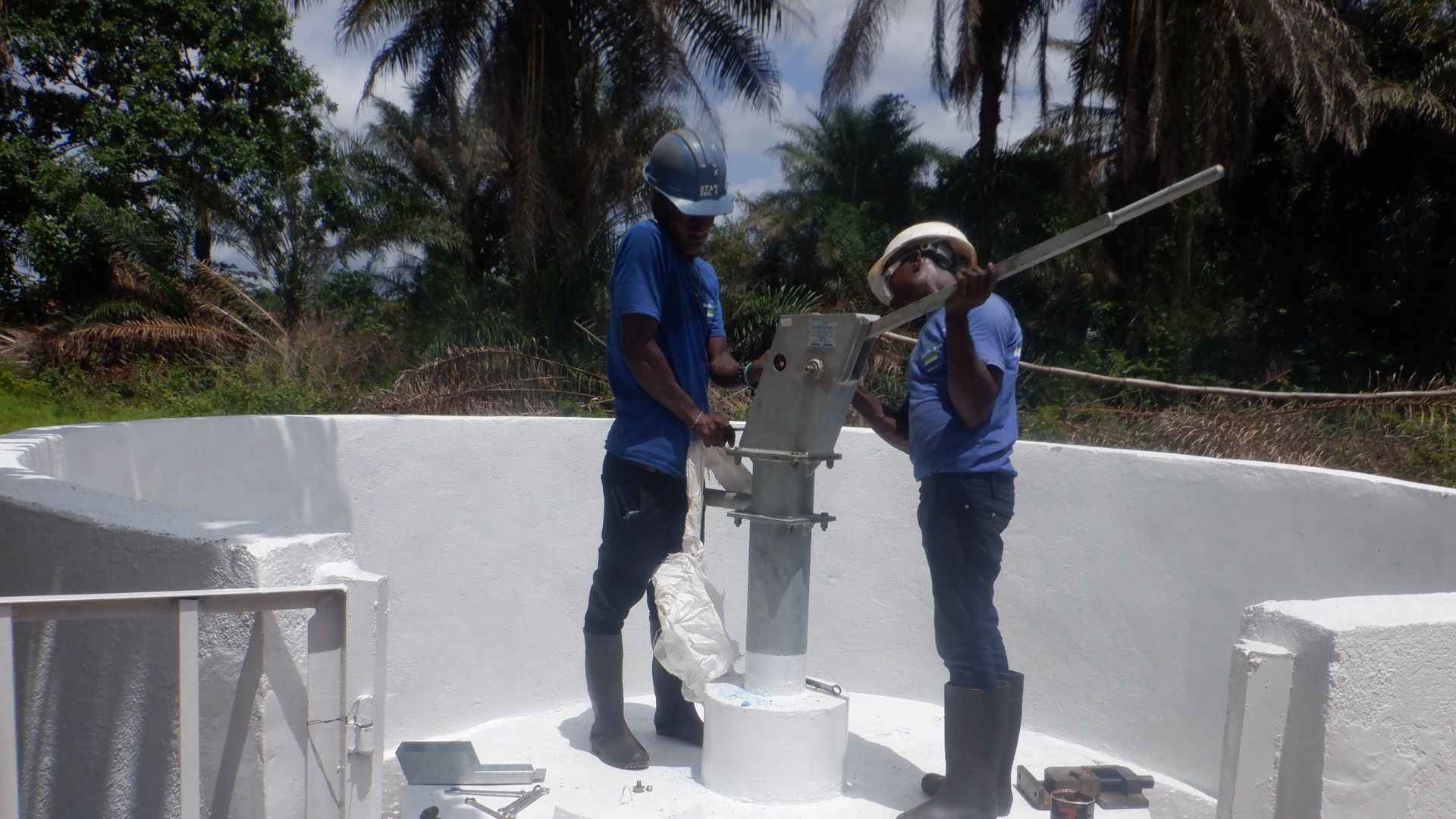The 154 residents of the Simbeck Community struggle to access sufficient water. Their unprotected well is too shallow and runs dry for many months. To make matters worse, collecting water there is an arduous process. They have to lower a water jug down with a rope and then haul it back up, weighing up to forty pounds. This task is often unattainable for children and older community members.

Isata collecting water at the community well in need of rehabilitation.
"The primary source has no hand pump, and the water users use rubber gallon [buckets] and a rope to fetch water from the well. It is not easy for them to fill one jerrycan, and after making many trips for a day, they complain [of] pains, especially when holding the rope to pull. It hurts their hands," shared Field Officer Alie Kamara.
"Elderly people and children will not be able to fetch water from the well. Sometimes, when the rope [is] left in the well, it will be hard for the water users to fetch water during that time. It will take hours or days before they could fetch water. Another source has a pump; it is located far from the water users. They were walking long distances to access the well. They [are] not able to make many trips because of the distance," said Alie.
As Alie Kamara shared, their only other option is a distant well, but it also runs dry, so even if they make the trip, water isn't guaranteed.
11-year-old Isata lives with this hardship every day.

Isata.
"The well that is close to me [is] very difficult to fetch water from. It is hard for me to fetch water from the well that has no hand pump. It is easy to reach but its present situation makes it difficult to fetch water. I [am] always afraid to fetch water from the well because [of] using [the] rubber gallon [bucket] and a rope to fetch water. This takes time and energy to fill all the rubber buckets. This is the moment that pains me, and I even decided not to fetch water there although it is close to my house. This causes me [to] walk long distances to access the hand pump well," she shared.
"The other well is far from my house, and I walk [a] long distance to reach there. All this will cause me to take so long to fetch water every day," she continued.
Isata knows well how water scarcity affects every aspect of life.
"Sometimes, I feel bad when there is not enough water. The well gets dry during the dry season, and the other well gets low water. The high need of water in the community causes [the] water [to be] not enough," she added.

Going to collect water in hopes the well isn't dry.
The water crisis in her community means Isata has little time for anything else in her life. Her education is on the back burner, along with other crucial tasks and childhood joys.
"Sometimes, the housework delays me to go to school; especially fetching water. This will cause me not to spend much time to study. In the end, it will lead to poor grades. I will not be able to promote [to] the next class. This will disturb me not to achieve my education. I will be happy if this project renews our water well," she said.

Isata doing laundry.
Rehabilitating the community well, will solve the seasonality issues as well as make collecting water easier.
With reliable, accessible water, Isata can have renewed hope. She will have time to study and go to school on time. Isata has big dreams; giving her accessible water will lay the foundation for a brighter future.

"I plan to become a lawyer in [the] future, but this will only happen when I focus [on] learning. I will judge people justly when I become a lawyer. I will be happy if this project helps renew our water well," she concluded.
Steps Toward a Solution
Our technical experts worked with the local community to identify the most effective solution to their water crisis. They decided to drill a borehole well, construct a platform for the well, and attach a hand pump.
Well
Abundant water often lies just beneath our feet. Aquifers—natural underground rivers—flow through layers of sediment and rock, offering a constant supply of safe water. A borehole well is drilled deep into the earth to access this naturally filtered and protected water. We penetrate meters, sometimes even hundreds of meters, of soil, silt, rock, and more to reach the water underground. Once found, we construct a platform for the well and attach a hand pump. The community gains a safe, enclosed water source capable of providing approximately five gallons of water per minute. Learn more here!
Community Education & Ownership
Hygiene and sanitation training are integral to our water projects. Training is tailored to each community's specific needs and includes key topics such as proper water handling, improved hygiene practices, disease transmission prevention, and care of the new water point. Safe water and improved hygiene habits foster a healthier future for everyone in the community. Encouraged and supported by the guidance of our team, a water user committee representative of the community's diverse members assumes responsibility for maintaining the water point, often gathering fees to ensure its upkeep.

 Borehole Well and Hand Pump
Borehole Well and Hand Pump





























